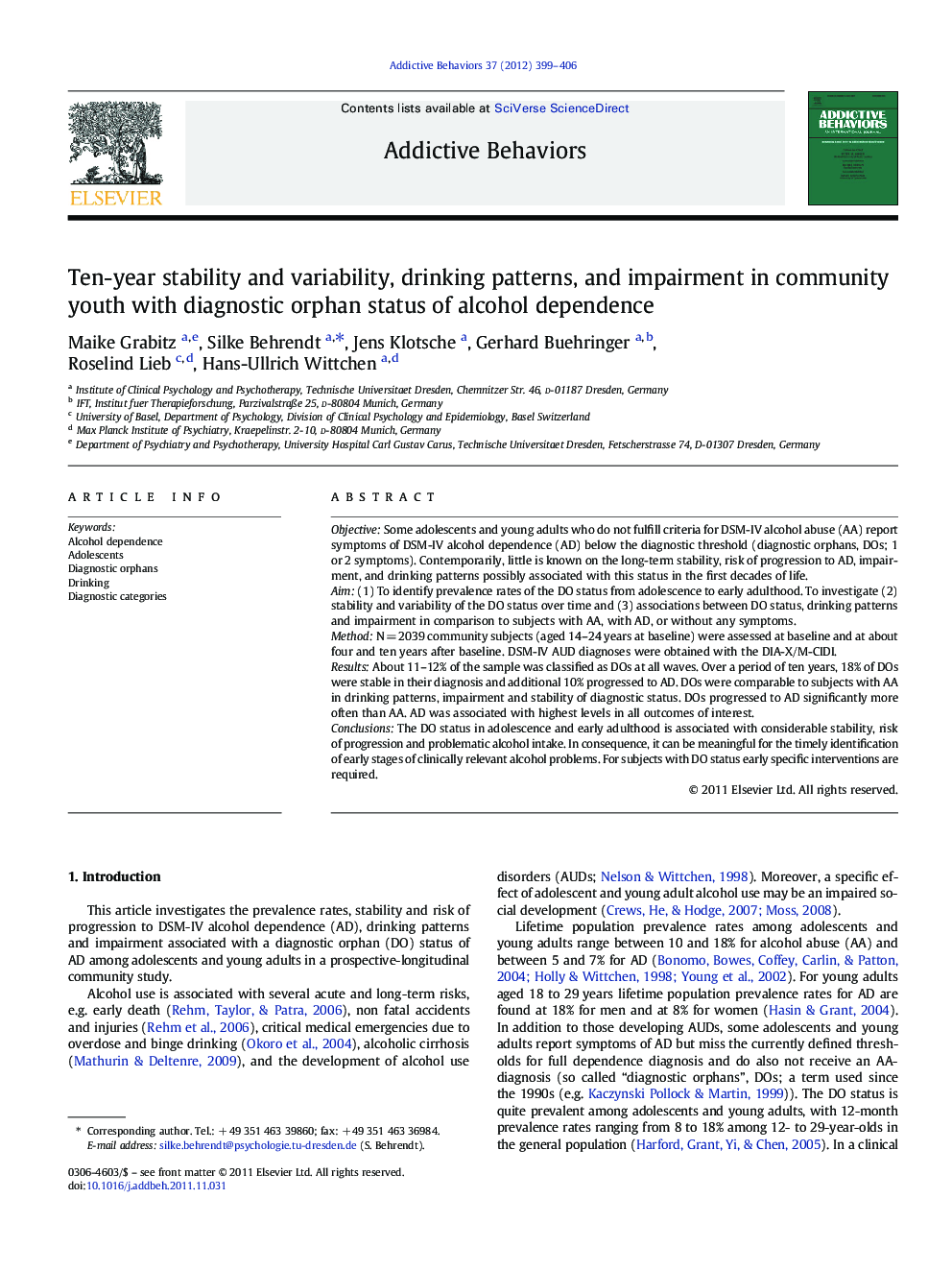| Article ID | Journal | Published Year | Pages | File Type |
|---|---|---|---|---|
| 899132 | Addictive Behaviors | 2012 | 8 Pages |
ObjectiveSome adolescents and young adults who do not fulfill criteria for DSM-IV alcohol abuse (AA) report symptoms of DSM-IV alcohol dependence (AD) below the diagnostic threshold (diagnostic orphans, DOs; 1 or 2 symptoms). Contemporarily, little is known on the long-term stability, risk of progression to AD, impairment, and drinking patterns possibly associated with this status in the first decades of life.Aim(1) To identify prevalence rates of the DO status from adolescence to early adulthood. To investigate (2) stability and variability of the DO status over time and (3) associations between DO status, drinking patterns and impairment in comparison to subjects with AA, with AD, or without any symptoms.MethodN = 2039 community subjects (aged 14–24 years at baseline) were assessed at baseline and at about four and ten years after baseline. DSM-IV AUD diagnoses were obtained with the DIA-X/M-CIDI.ResultsAbout 11–12% of the sample was classified as DOs at all waves. Over a period of ten years, 18% of DOs were stable in their diagnosis and additional 10% progressed to AD. DOs were comparable to subjects with AA in drinking patterns, impairment and stability of diagnostic status. DOs progressed to AD significantly more often than AA. AD was associated with highest levels in all outcomes of interest.ConclusionsThe DO status in adolescence and early adulthood is associated with considerable stability, risk of progression and problematic alcohol intake. In consequence, it can be meaningful for the timely identification of early stages of clinically relevant alcohol problems. For subjects with DO status early specific interventions are required.
► We observe adolescent diagnostic orphans (DOs of alcohol dependence) over 10 years. ► The DO status occurs frequently. ► DOs show considerable increased drinking patterns. ► 18% of DOs hold their DO status. Additional 10% progress to AD. ► A timely identification and early specific interventions for DOs are required.
